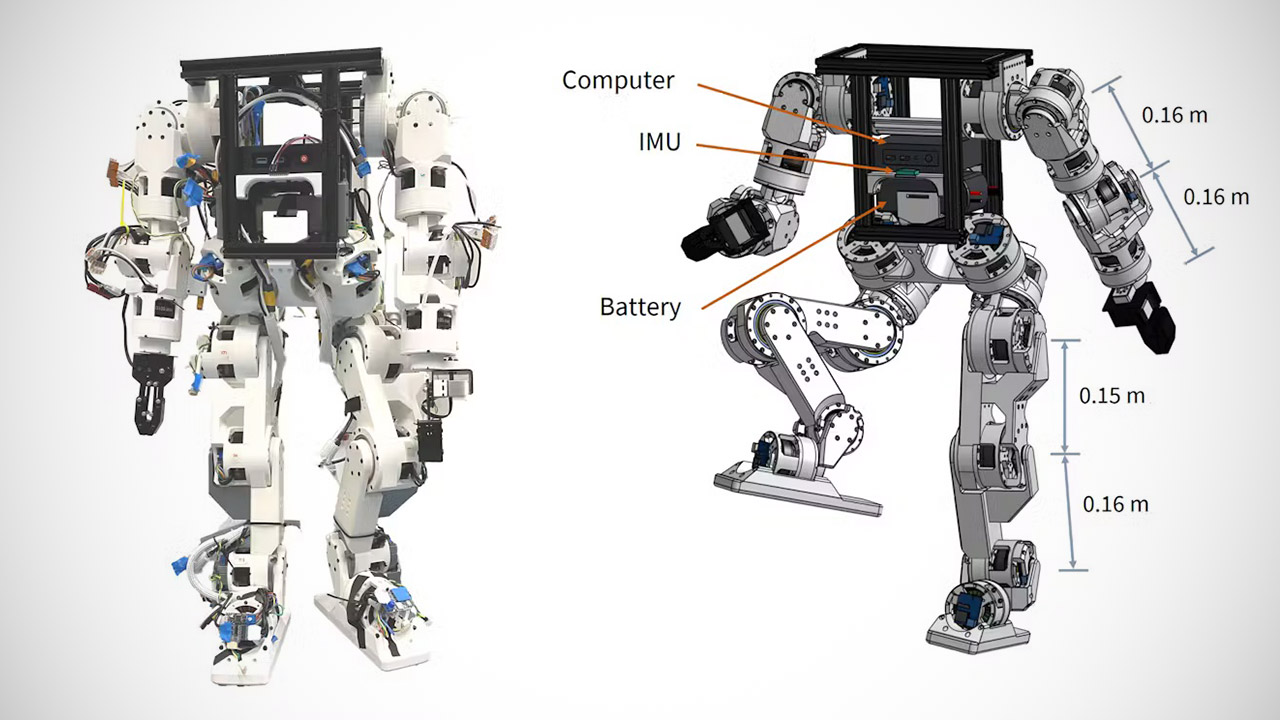
Humanoid robots used to be the kind of thing you’d only see in big-budget projects, but now they’re showing up in garages and basements, thanks to the Berkeley Humanoid Lite. This open-source, 3D-printed installation from UC Berkeley’s engineering crew is as welcoming to newcomers as it is innovative, coming in at under $5,000 and ready to shake up how we interact with robotics.
Standing about a meter tall and weighing 16 kilograms, the Berkeley Humanoid Lite is a two-legged bot that’s all about keeping things affordable yet powerful. Its frame, mostly whipped up on a 3D printer, cuts costs and begs for personalization. Unlike the polished, locked-down robots from giants like Boston Dynamics, this one runs on stuff you could grab from a hobby shop—such as Raspberry Pis and servos. “We want folks in classrooms and labs to get hands-on with how humanoids tick,” says Tony Chi, a Ph.D. student in Berkeley’s electrical engineering department.
- 【Smart APP Wireless Printing】 Fully assembled 3d printer, out of the box. Compact TINA2S 3D printers with self-developed APP "Poloprint Cloud",...
- 【Fully Open-Source】Tina2S mini 3d printer is compatible with Wiibuilder, Cura, Kiri(Chrome book), PrusaSlicer software, you can diy your own...
- 【Quiet-Print Enviroment】WEEFUN Tina2S small 3d printers is built in self-developed motherboard for ultra-quiet printing(40~50dB), faster print...

Building your own humanoid might sound like a tall order, but Berkeley’s team has made it surprisingly doable. You can print the parts on a basic 3D printer, and if you’re handy with a screwdriver and have a week to spare, you’re in business. The thing’s tough, too—tests show its 3D-printed actuators can handle tricky tasks and walking without giving out. “We’ve yet to break one,” Chi says with a grin.
The control system is where it gets really fun. A joystick setup lets the robot tackle delicate jobs, like twisting a Rubik’s Cube with finesse. For the tech enthusiasts, the team trained a reinforcement learning controller in a virtual world that works in real life right out of the gate—no modifications needed. That’s a big deal for a robot that can just start walking.
The open-source goal is the heart of this project. All the designs, software, and training tools are free on the project’s website, and there’s a buzzing Discord community swapping ideas. “It’s about starting with a simple system and building it up, piece by piece,” Chi says, inviting everyone to join the party.
It’s not all smooth sailing. Five grand is a bargain compared to pro-grade humanoids, but it’s still a chunk of change for a hobbyist. Tracking down parts and nailing the assembly takes some know-how, though the team’s guides try to soften the learning curve.
[Source]










